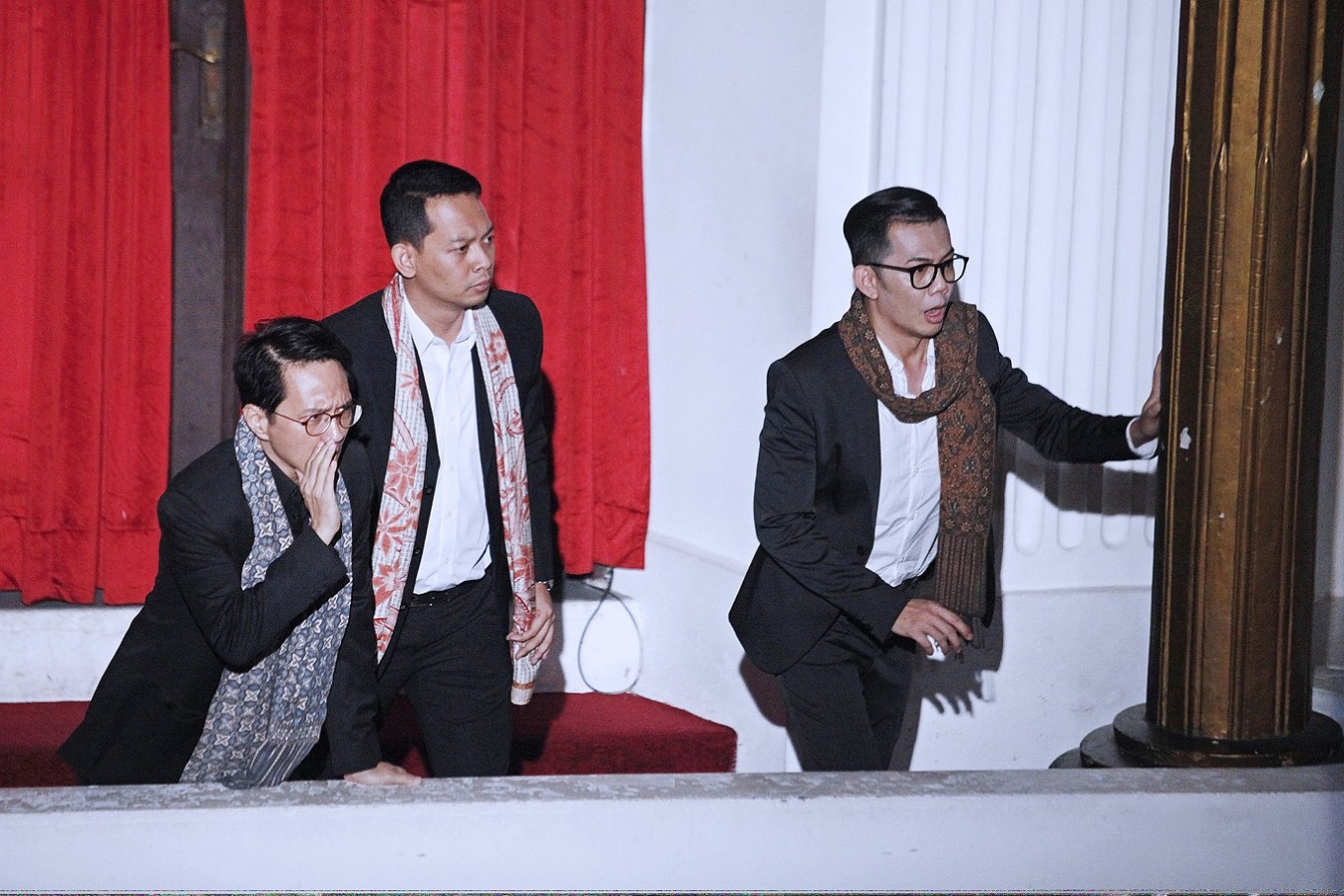Popular Reads
Top Results
Can't find what you're looking for?
View all search resultsPopular Reads
Top Results
Can't find what you're looking for?
View all search resultsA night at the opera: Jakarta Philharmonic takes a stroll down early 20th century Italy lane
The Jakarta City Philharmonic treated the city to a night of Italian music appreciation, with a short performances of a famous opera and three orchestral works, including one by an Indonesian composer.
Change text size
Gift Premium Articles
to Anyone
I
talia Abad XX: Daur Ulang & Opera was the theme of Jakarta City Philharmonic’s evening performance at Gedung Kesenian Jakarta (GKJ) playhouse — an appreciative showcase of three 20th-century compositions by legendary Italian composers Otto Respighi, Ferruccio Busoni and Giacomo Puccini.
Puccini is one of the most celebrated opera composers in history and several of his works have now become standard repertoire for opera and even orchestral performances.
Other notable Puccini masterpieces include Madame Butterfly and Tosca. His work was saved till the very end, but its performance was the most captivating of the night.
In their interpretations of the first act of Puccini’s La Boheme, the actors were the clear stars, bellowing with the kind of grace that opera vocalists should aspire to the minute they decide to become serious about their art.
With that said, the music during the first act of La Boheme was clearly overshadowed by the performance of its actors. The orchestra seemed unremarkable while the actors themselves were very engaging in their roles, grabbing the attention of the audience with their extraordinary intensity.
 Ensemble leader: Conductor Budi Utomo Prabowo guides the Jakarta City Philharmonic through a performance.(JP/Ricky Yudhistira)
Ensemble leader: Conductor Budi Utomo Prabowo guides the Jakarta City Philharmonic through a performance.(JP/Ricky Yudhistira)
The orchestra’s best moment came during the first piece of the night, which was Otto Respighi’s “Ancient Airs and Dances, Suite I.” Fluttery melodies and classy lifts, reminiscent of the chamber music of Johann Sebastian Bach’s era, were combined with the heavy use of harpsichord, which sonically defined Mozart’s era. Classical music in the early 20th century either strived to become increasingly experimental or merely took cues from eras of the past and molded them into one. Respighi’s piece is the latter.
Read also: Sydney Opera House to get largest-ever upgrade
Even so, the sounds of sophistication reigned supreme within the walls of GKJ that night.
Due to its stereotypical characterization as a pompous, posh activity, many seem to have forgotten the art of opera itself, which is able to extoll emotion as effectively as theatre or film. La Boheme itself is a comedy. Or at least the first act of it is.
The idea of five impoverished Bohemian flat mates conversing in such a grandiose manner is funny on the surface and is coupled with dialog that blends variations of humor, from slapstick to breaks of the fourth wall.
Five star tenors and one soprano took the stage, but it was undoubtedly Pharel Silaban, Fika Djaya and Joseph Kristanto that shone the most. This isn’t to say the rest (Ega Azarya, Hari Santosa and Rainier Revireino) did not put in great performances as well.
 Fab five: Ega O. Azarya (left to right), Rainier Revireino, Hari Santosa, Joseph Kristanto and Pharel Silaban were the five principal male performers of La Boheme.(JP/Ricky Yudhistira)
Fab five: Ega O. Azarya (left to right), Rainier Revireino, Hari Santosa, Joseph Kristanto and Pharel Silaban were the five principal male performers of La Boheme.(JP/Ricky Yudhistira)
Performing opera takes incredible skill and a whole lot of energy, especially to sustain those grand notes while also trying to emote at the same time. It is amazing to see that even in Indonesia, the art is still practiced by a handful of enthusiasts.
Read also: 'Ainun Opera' to take to European stages next year
The duet between Pharel’s Rodolfo character and Fika’s Mimi at the tail end of the act resonated well and capped off the night’s collection of performances brilliantly. One could feel the energy and feeling exchanged between both players in their characterizations. While their voices were unable to fully envelop the cavernous hall, and sometimes fell back into the music, it was their passionate portrayals that made the performance, despite some technical drawbacks.
 Waiting in the wings: Joseph Kristanto (left to right), Ega O. Azarya and Rainier Revireino perform in a scene in which they are impatiently waiting for a friend.(JP/Ricky Yudhistira)
Waiting in the wings: Joseph Kristanto (left to right), Ega O. Azarya and Rainier Revireino perform in a scene in which they are impatiently waiting for a friend.(JP/Ricky Yudhistira)
Besides the Italians, a particular highlight of the evening was the performance of a 1979 composition by local composer Diecky K. Indrapradja, entitled “Kinthilan,” which means left behind to participate.
The music blended well with the Respighi piece performed prior, as the seamless transition showed the smooth blend and musical similarities between the two pieces.
Concept-wise, “Kinthilan” originally featured a variety of stuttering effects created by two musicians playing interlocking patterns in a gamelan orchestra. The structure is built on an ostinato, but is autonomous from Western tonal music, meaning that its true meaning cannot be translated immediately into the Western orchestral format. However, with this performance, Diecky insisted the concept of “Kinthilan” itself is the integration of Western and Eastern formats, in smooth fashion as well.
Classical compositions from Indonesia that are not heavy on traditional elements are rare at best and it is liberating to see that the art form is not lost on our ears.











